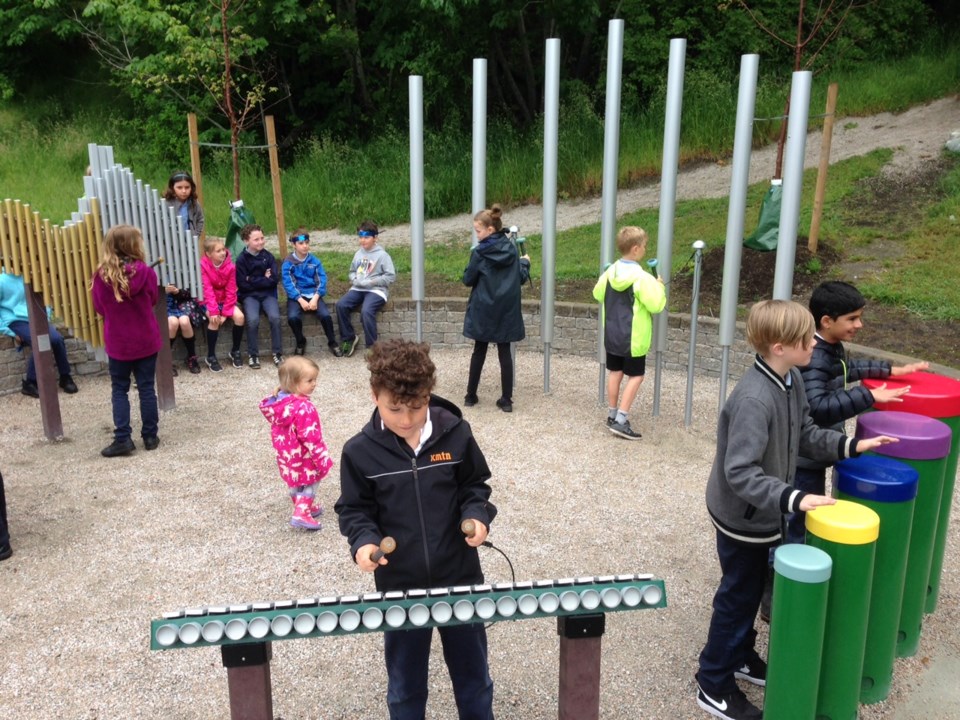Once a site considered a blight, Diefenbaker Park in Tsawwassen is the story of a community pushing for the creation of what's now a much valued public amenity.
Former prime minister John Diefenbaker made an appearance in Delta 48 years ago to celebrate a new park named in his honour, a uniquely shaped, tranquil site where kids now play and families enjoy events year-round.
If you're of a certain vintage you'll likely remember how residents took action to have it built following a tragedy that occurred nearby.
It was a cold afternoon in January of 1973 when seven-year-old Gordon Edgar Powell was reported missing by his mother.
A search by police, a Point Roberts deputy sheriff, as well as friends and neighbours, was immediately launched.
Five hours later, a volunteer firefighter discovered the little boy's body in a local gravel pit. Police said indications were the boy fell through the ice into about four feet of water and was unable to drag himself out.
The Optimist at the time reported the boy had been seen sliding on the ice with another boy at the pit, owned by Century Manufacturing Ltd., at 56 Street and 1 Avenue, but the other boy had left to go home.
Seven years earlier, a group of Pebble Hill residents had gone to municipal council to convey their concerns about the private gravel pit as well as an adjacent pit owned and operated by the municipality.
They complained that when they purchased their homes a short distance from the pits, which had recorded several deaths and accidents over the years, it was with the understanding the sites would be converted into passive parks.
Only a month prior to the boy's death, the Tsawwassen Business Association wanted to convert the old municipal pit, located opposite to the Century Manufacturing Ltd. pit, into a garden complex.
That proposal included a possible conservatory, footpaths, ponds and bridges.
The group met with local Conservative MP John Reynolds, who was interested in the idea and promised to look into potential federal funding for the project.
For decades the Delta-owned pit supplied much of the gravel for the development of Tsawwassen, but by the early 1970s locals wanted the pits gone, even though the southwest corner of the municipal pit was still being used as a source of gravel for Delta.
Following the tragedy, then-mayor Dugald Morrison said the private pit's owner, George Hodgins would be sent a notice to make whatever changes were necessary to comply with municipal bylaws. The mayor's statement followed a meeting with a group of Pebble Hill residents who said they had been warning about the dangers.
At the time, Ald. Bernard Moore said he was of the opinion that Delta had to clean up its own backyard, meaning the Delta gravel pit next to the Century pit, before any bylaws were enforced.
It didn't take long for the municipality to clash with Hodgins over the safety of his site as he threatened a lawsuit over a newly erected fence around his pit. He also noted he personally observed 75 children playing in the municipal pit that was supposedly also fenced.
Meanwhile, a new TBA committee formed to coordinate the various groups interested in doing something about both gravel pits.
At a meeting attended by over 100 people at the South Delta Recreation Centre a month after the tragedy, committee chair Gary Morris said they would be in a better position to get things done by getting the smaller groups together to form one larger voice.
He believed there was money available from various federal and provincial sources to develop a possible Butchart-type garden, outdoor theatre, park, lawn bowling green and other public facilities.
By that summer, the 24 members of the South Delta Gravel Pit Advisory Committee had come up with a number of ideas, including turning the Delta-owned site into a park with a 450-seat cultural arts centre.
The committee noted in its report to Delta council that members had concerns about the over-emphasis on sports-oriented facilities in the municipality.
The committee recommended development of the municipal pit into park and gardens at an accelerated pace, which could be accomplished through re-allocation of municipal funds and immediate application for any federal and provincial grants.
Around that same time, Century also came up with a proposal for the municipal pit, which involved an arts centre, botanical gardens, townhouse development and other features.
The adjacent Century pit, though, wouldn't end up being part of the ambitious plan. Instead, the privately-owned site was eventually developed into single-family housing by the 1980s.
In Gwen Szychter's book Chewassen, Tsawwassen or Chiltinm: The Land Facing the Sea, the municipality had already decided to hand over the Delta-owned pit to the parks and recreation department several months before the drowning at the private pit, aiming to eventually develop it into a park.
The former municipal pit was officially named Diefenbaker Park in June of 1976 with the former prime minister on hand for the big ceremony. During that reception, then-mayor Tom Goode said the gravel pit "has been a blight on the municipality for many years" and that many Tsawwassenites campaigned long and hard to turn it into "one of the most attractive passive parks in the Lower Mainland."
It wouldn't be until September of 1980 that the project was finally completed.
The first work on the new park was the creation of a half-acre lake in 1975 with other features gradually added. In her book, Szychter noted an ambitious plan initially had the park completed by 1978, but delays pushed that back by a couple of years.
Noting the naming of the park after a non-Deltan was "an obvious political decision" resented by some residents, Szychter wrote that a compromise had been reached by the time construction began between those wanting a quiet, passive park and those pitching more grand ideas.
New additions have come to the park over the years including projects initiated by the Rotary Club.




